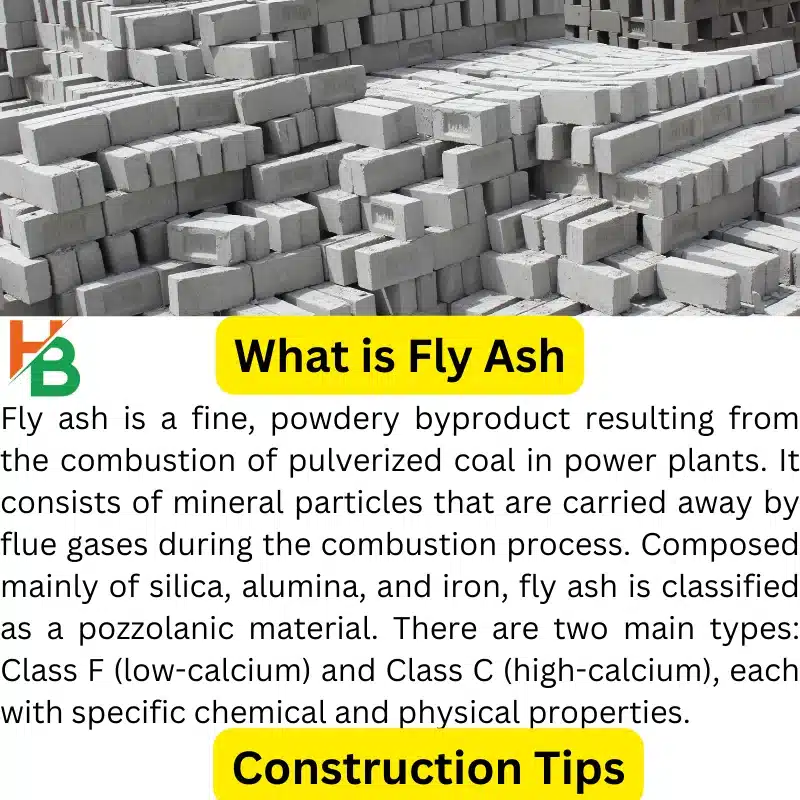What is Fly Ash?
Table of Contents
ToggleFly ash is a fine, powdery byproduct resulting from the combustion of pulverized coal in power plants. It consists of mineral particles that are carried away by flue gases during the combustion process. Composed mainly of silica, alumina, and iron, fly ash is classified as a pozzolanic material. There are two main types: Class F (low-calcium) and Class C (high-calcium), each with specific chemical and physical properties.

Applications of Fly Ash:
Concrete Admixture:
- Properties: Reduces cement-aggregate reaction, lowers heat evolution, improves water tightness, enhances plasticity and cohesiveness, and strengthens concrete.
- Usage: Widely used in concrete, especially for high-strength and high-performance applications.
Cellular Concrete Blocks:
- Properties: Provides a favorable strength-to-weight ratio, good sound insulation, stability against temperature variations, resistance to fire and water, and low thermal conductivity.
- Usage: Autoclaved cellular concrete blocks are produced by autoclaving a mixture of fly ash and lime, offering technical advantages in construction.
Fly Ash Building Blocks:
- Properties: Manufactured with a mix of fly ash, sand, and lime, resulting in bricks with superior shape, technical specifications, compressive strength, and impermeability.
- Usage: An eco-friendly alternative to traditional burnt bricks, these blocks are lighter, about 20%, and more cost-effective, contributing to sustainable and economical construction practices.
Fly ash’s versatile properties make it a valuable material in various construction applications, promoting both sustainability and efficiency in the building industry.
Fly ash brick Size:




